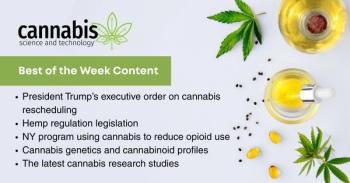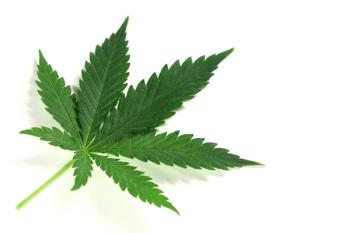
Cannabis Science and Technology
- March/April 2025
- Volume 8
- Issue 2
From Pain to Pimples: The Growing List of Topical Cannabinoid Applications
Topically applied cannabinoids such as CBD and THC may offer significant benefits for people experiencing localized pain and dermatological conditions. This article explores these potential benefits as well as their mechanisms.
Cannabis products offer a variety of consumption options for users to choose from, including edibles, joints, vapes, and suppositories. These dosage formats fit different needs and consumer preferences, but cannabis products can also be administered externally through formats such as creams and balms.
The most popular cannabinoids used in topical products are cannabidiol (CBD) and tetrahydrocannabinol (THC). THC is well-known for being intoxicating when ingested orally, but there is not a great deal of research on THC’s psychoactive effects when applied on the skin. That said, it is commonly accepted that THC is not intoxicating when applied topically. One study published in Advances in Therapy asked subjects applying a topical containing 100 mg CBD: 100 mg THC whether they were experiencing psychoactive effects at multiple timepoints. All participants said no (1).
There is a growing body of scientific literature demonstrating that topically applied cannabinoids may provide therapeutic benefits by either relieving pain or alleviating symptoms of skin conditions. “There have been human studies showing benefits of topical cannabis preparations in a variety of conditions, including musculoskeletal symptoms like TMJ pain and sports-related pain, as well as dermatological conditions like acne, eczema, and wound healing,” said Dustin Sulak, DO, Founder of Healer. “There is also clinical evidence of systemic absorption of topically-applied cannabinoids for systemic conditions like peripheral neuropathy and Fragile X syndrome (2). Preclinical studies show many more benefits, including UV light protection, anticancer effects, and more.”
Looking at musculoskeletal pain, a review recently published in February 2025 in Pharmaceutics called, “The Therapeutic Potential of Cannabidiol in the Management of Temporomandibular Disorders and Orofacial Pain,” investigated CBD’s potential for alleviating temporomandibular disorders (TMDs) (3). TMDs are are a group of conditions that affect temporomandibular joint (TMJ) and other related muscles (3). The review explains that CBD has been shown to decrease inflammation, reduce pain, and provide muscle relaxation. Dermatological conditions such as eczema may also benefit from topical cannabinoids due to their anti-inflammatory and antipruitic properties (4). “The mechanisms by which cannabinoids decrease inflammation and pruritus are diverse and involve CB1/CB2 receptors, chemokines, and an interaction between the endocannabinoid system and the immune system,” write Filipuic et al. (4) Other studies show that acne, characterized by high production of sebum and chronic inflammation, may be treated by inhibiting the CB2 receptors, resulting in suppression of basal lipid production. (4)
Cannabis topicals work via the endocannabinoid system, which can be found throughout the body. The two main receptors for the endocannabinoid system, mentioned earlier, are the CB1 and CB2 receptors (5). The expression of these receptors in human skin has been well documented, and elements of the endocannabinoid system have been found in “epidermal keratinocytes, melanocytes, mast cells and cutaneous immune regulatory system.” (5) When applied on the skin, topicals provide a more localized approach for users so that they can place the topical onto a specific area of the body. Topicals come in a variety of options such as, salves, lotions, balms, roll-ons, creams, and massage oils to name a few. With the various methods of cannabinoid consumption, users may feel concerned that the cumulative exposure to cannabinoids through smoking, edibles, and topicals can lead to adverse effects or interaction issues, but there is little risk of this.
“I don’t think it’s likely to cause a problem in most cases, and spacing out wouldn’t make a big difference because both oral and topical/transdermal have long durations of action. Conversely, there’s evidence that people who use multiple routes of delivery, such as oral + topical, get better results when treating pain,” Dr. Sulak explained.
Although THC and CBD are the most commonly used cannabinoids in cannabis products, other cannabinoids are beginning to be explored for their medicinal properties. Cannabinoids such as cannabigerol (CBG) and cannabidiolic acid (CBDA) are some of the lesser-known cannabinoids that are rising up in popularity for their anti-inflammatory, pain, and other health benefits, says Dr. Sulak. “I’m most interested in CBDA, which is not commonly found in cannabis topical products. One human study (6) showed impressive wound healing with CBDA,” he explained. “Also, based on animal data, CBDA is absorbed much better than CBD. Other animal data suggests that CBDA and THC have synergistic effects on inflammatory pain.”
“As usual, there’s a lot of overlap among the cannabinoids, but also some important differences,” Dr. Sulak added. “For example, THC and CBD can both help with pain and spasticity, but THC appears to be better for itching while CBD is better for preventing scarring.”
There are a number of potential synergies that can be leveraged when formulating topical cannabis products, both from within cannabis and from other source. Some terpenes, for example, have been found to have skin permeation enhancer abilities. “Beta caryophyllene, also found in some cannabis varieties, has its own benefits and is likely the therapeutic component of copaiba oil, which has its own body of literature suggesting beneficial topical effects. It’s a CB2 agonist and could be very complimentary with CBD and CBDA. Healer topicals also contain copaiba oil for this reason,” said Dr. Sulak. “Also, one study (7) found that a combination of CBD and ginger worked well together for eczema. I'm sure we have a lot more to learn about combining cannabinoids and other botanicals in topical preparations.”
The potential benefits of topical cannabinoids are vast, and current research warrants further investigation to elucidate their mechanisms and develop effective treatments.
References
- Cannabis topicals 101: Types, uses, benefits
https://risecannabis.com/blog/cannabis-101/guide-to-cannabis-topicals/ (accessed Apr 15, 2025). - THC Lotion vs. CBD lotion: Concentration, uses, side effects
https://www.healthline.com/health/thc-lotion-vs-cbd-lotion#takeaway (accessed Apr 16, 2025). - What is the entourage effect and is it beneficial?
https://www.medicalnewstoday.com/articles/entourage-effect#definition (accessed Apr 15, 2025). - Fava ALM, Souza CM, Santos ÉMD, et al. Evidence of Cannabidiol Effectiveness Associated or Not with Tetrahydrocannabinol in Topical Administration: A Scope Review. Pharmaceuticals (Basel). 2024;17(6):748. Published 2024 Jun 6. doi:10.3390/ph17060748
- Walczyńska-Dragon, K.; Kurek-Górecka, A.; Fiegler-Rudol, J.; Nitecka-Buchta, A.; Baron, S. The Therapeutic Potential of Cannabidiol in the Management of Temporomandibular Disorders and Orofacial Pain. Pharmaceutics 2025, 17, 328.
https://doi.org/10.3390/pharmaceutics17030328 - Verilife. What are cannabis topicals - topical THC
https://www.verilife.com/learn/cannabis-topicals (accessed Apr 15, 2025). - Makhakhe L. Topical cannabidiol (CBD) in skin pathology - A comprehensive review and prospects for new therapeutic opportunities. S Afr Fam Pract (2004). 2022;64(1):e1-e4. Published 2022 May 30. doi:10.4102/safp.v64i1.5493
- Intro to Cannabis Topicals: OCS
https://ocs.ca/blogs/cannabis-basics/intro-to-cannabis-topicals (accessed Apr 15, 2025). - Parikh AC, Jeffery CS, Sandhu Z, Brownlee BP, Queimado L, Mims MM. The effect of cannabinoids on wound healing: A review. Health Sci Rep. 2024;7(2):e1908. Published 2024 Feb 25. doi:10.1002/hsr2.1908
- Christine Neubauer, Martin Kragl, Theodor Braun, Przemyslaw Filipek, Ehsan Bonyadi Rad, Julia Grander, Nicole Mähler, Kathrin Moritz, Stefan Hoch, Ramona Ziegler, Stanislav Andreev, Hubert Steindl, Thomas Jakschitz, Andreas Koeberle, Günther Bonn, Michael Soeberdt, Christoph Abels. An oil-in-water emulsion containing a combination of ginger extract and synthetic cannabidiol with potent in vitro anti-inflammatory effects alleviates symptoms of atopic dermatitis in a clinical trial. European Journal of Dermatology. 2024;34(4):416-424. doi:10.1684/ejd.2024.4738
Articles in this issue
Newsletter
Unlock the latest breakthroughs in cannabis science—subscribe now to get expert insights, research, and industry updates delivered to your inbox.




